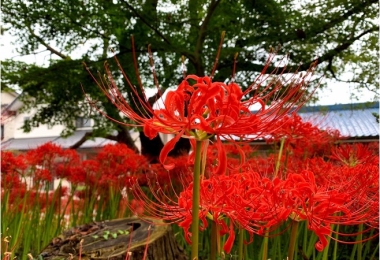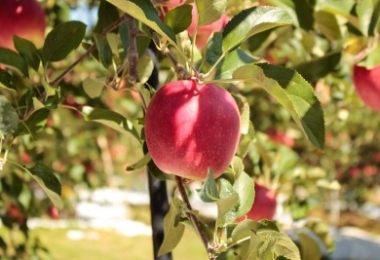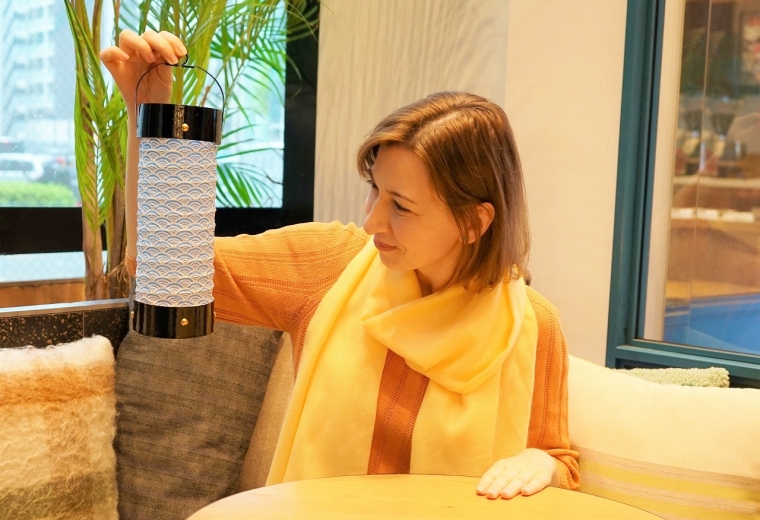Ushiku Daibutsu: The Tallest Bronze Buddha Statue in the World! Sightseeing and Food Guide
Activity
History
Food
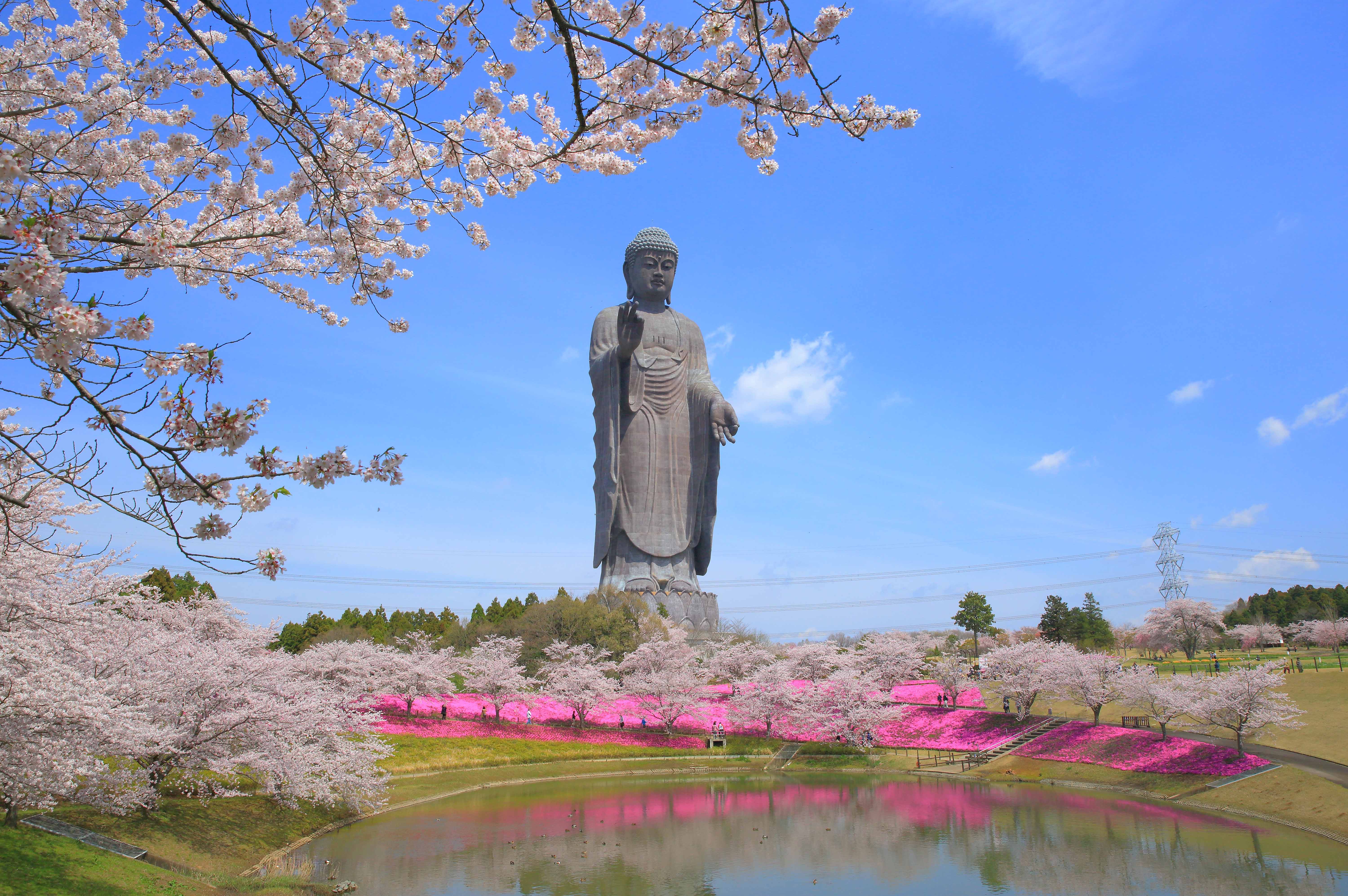
The Ushiku Daibutsu in Ibaraki Prefecture is the largest bronze Buddha statue in the world. Alongside the various attractions inside the statue and is surrounding area, there are also shopping and dining spots nearby, making it an ideal destination for a day trip!
Visit the Ushiku Daibutsu Buddha Statue
Are you familiar with the Ushiku Daibutsu in Ibaraki Prefecture? At 120 meters tall, it was listed in the 1995 Guinness World Records as the tallest bronze Buddha statue in the world.
The statue’s uniqueness does not stop at its size. While most temples enshrine a Buddha figure, the Ushiku Daibutsu is itself a temple. Visitors can even browse inside the statue.
This article introduces the Ushiku Daibutsu and some interesting spots in the area.
Information
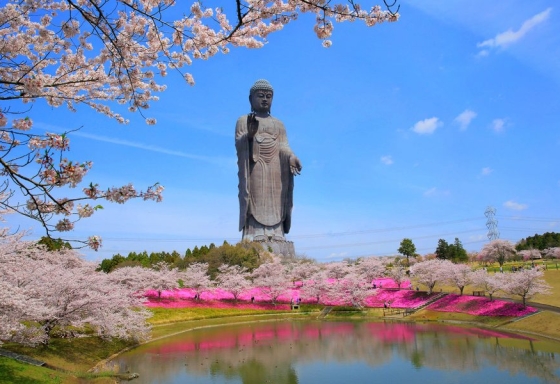
Ushiku Daibutsu Buddha Statue
This giant Buddhist statue towers above the Ibaraki countryside. At 120 meters tall, it holds the Guinness World Record as the tallest standing bronze statue worldwide. Visitors can go inside the B…
See MoreHighlights of the Ushiku Daibutsu Buddha Statue
Aerial Photo of the Statue
The statue was erected in 1992 to create a place for people to find solace and peace in their hearts. The city of Ushiku was selected for its ties to Shinran (1173-1263), a prominent monk in the history of Japanese Buddhism.
The statue’s exterior is covered with over 6,000 bronze panels, which took ten years to erect. The interior has five levels and an elevator, so senior citizens and wheelchair users need not worry.
The following are highlights according to the fixed route for visitors.
*The Ushiku Daibutsu is a temple of Jodo Shinshu, a branch of Mahayana Buddhism. While Mahayana differs from Theravada Buddhism, which is prevalent in southeastern Asian countries, this temple is open to all, regardless of their beliefs.
World of Light (First Floor)
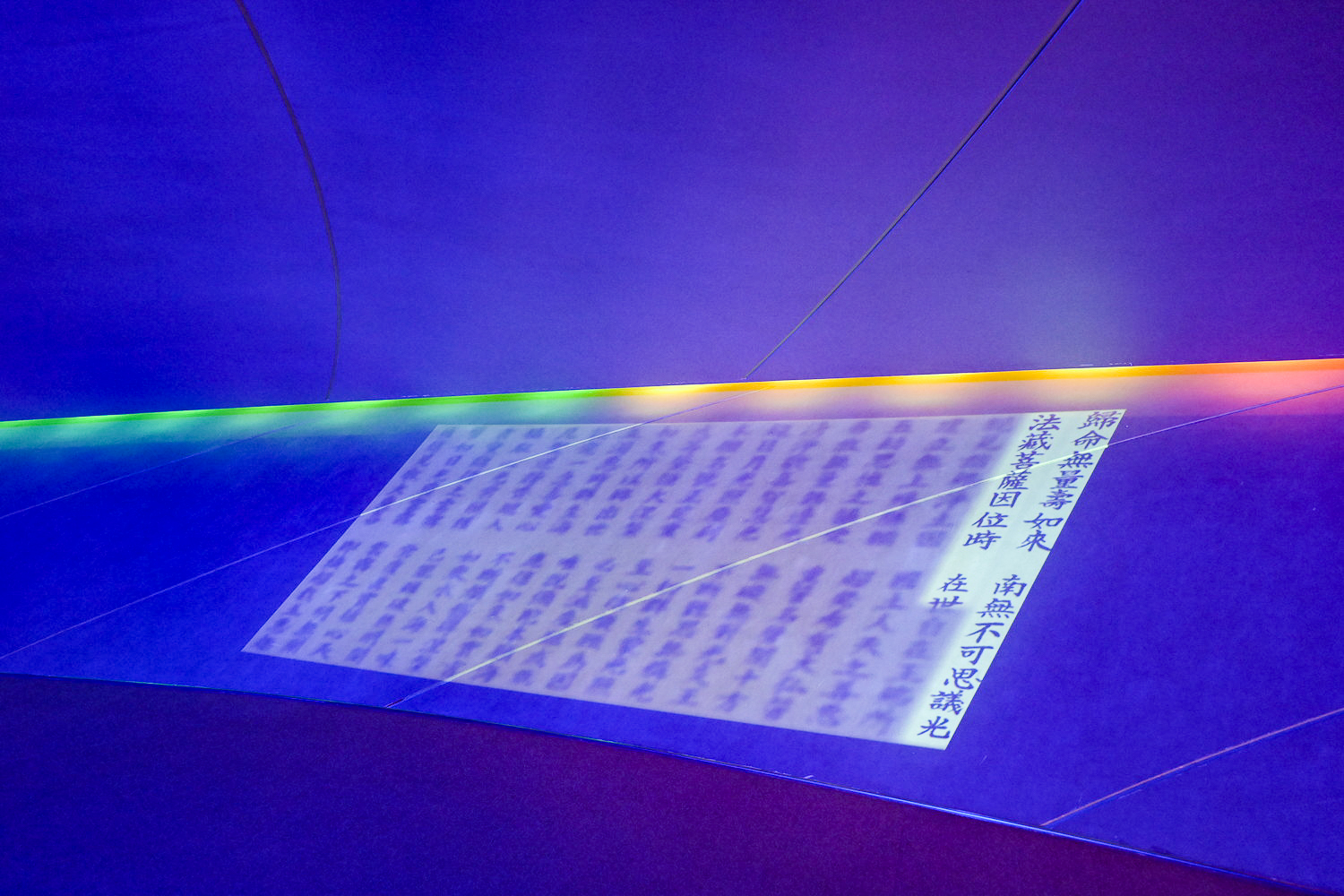
Before entering the statue, visitors will be asked to take their shoes off. The first area you’ll encounter is the “World of Light” located on the first floor. It has a serene atmosphere, furnished with the 12 blessings of Amitabha Tathagata and Buddhist scriptures displayed on the screen.
Exhibition Room (Second Floor)
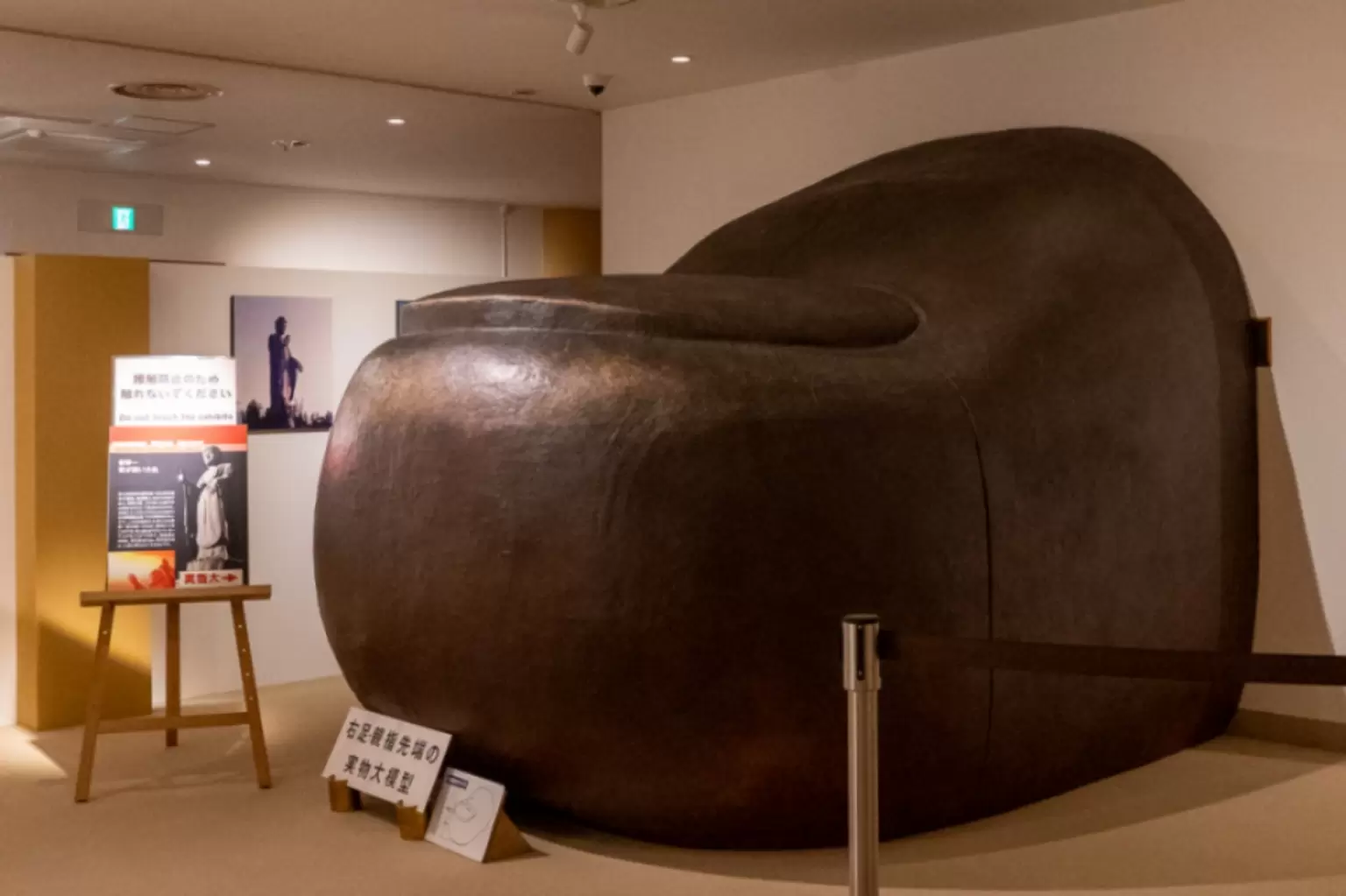
The second floor displays how the Daibutsu was built. There is a full-scale model of its feet and photographs taken during its construction.
Mt. Ryojusen Room (Fourth and Fifth Floor)
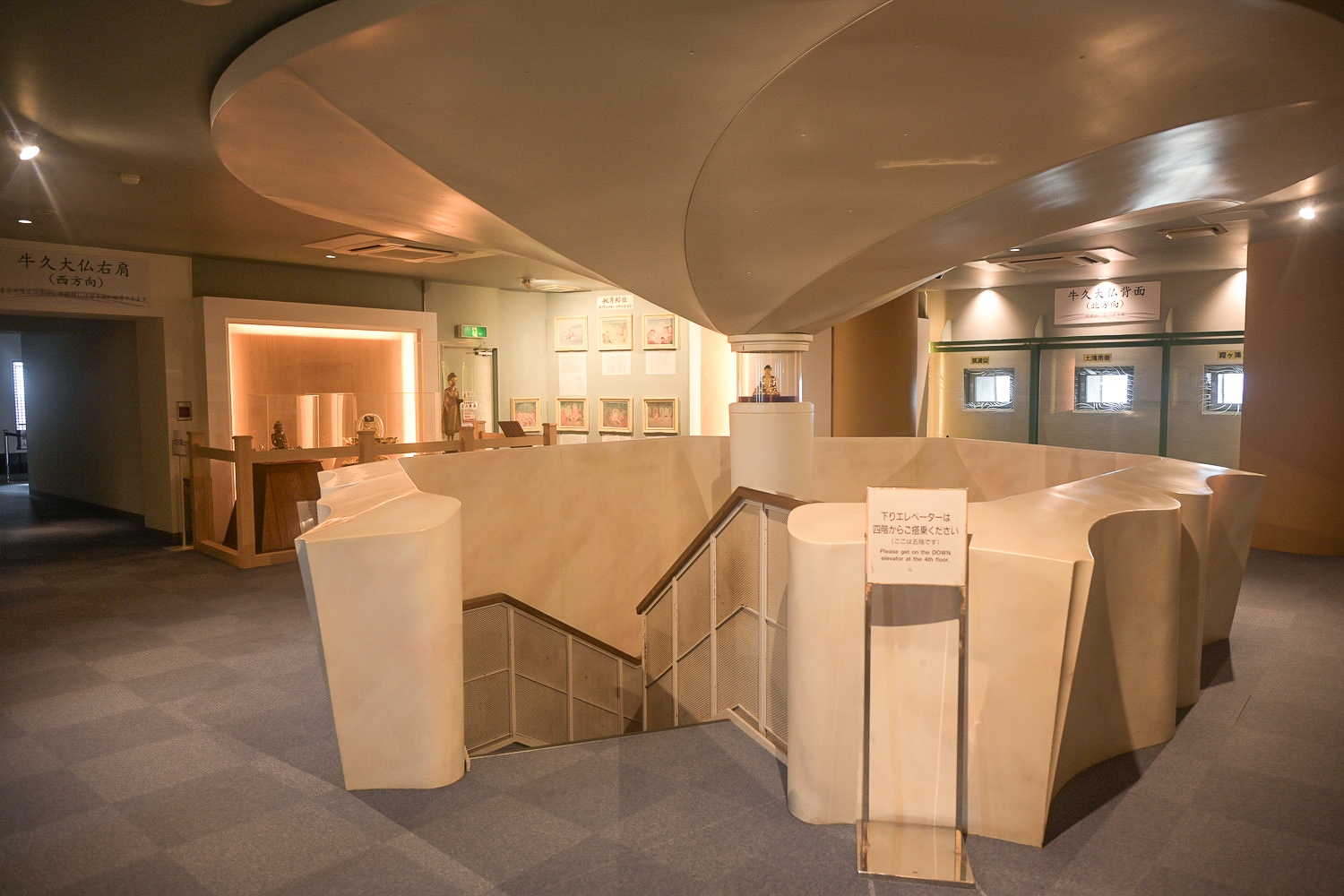
Take the elevator to the fifth floor, the Mt. Ryojusen Room. The name is derived from an Indian mountain where the Buddha is said to have resided.
Here Buddhist history and the remains of the Buddha are displayed. The three narrow windows visible from outside on the chest of Ushiku Daibutsu correspond to this floor (85 meters above ground) and are part of the observatory. Visitors can even see Tokyo Skytree and Mount Fuji in the distance if the weather is clear.
There is a souvenir shop on the fourth floor, which also handles limited-time items.
World of the Lotus Sanctuary (Third Floor)
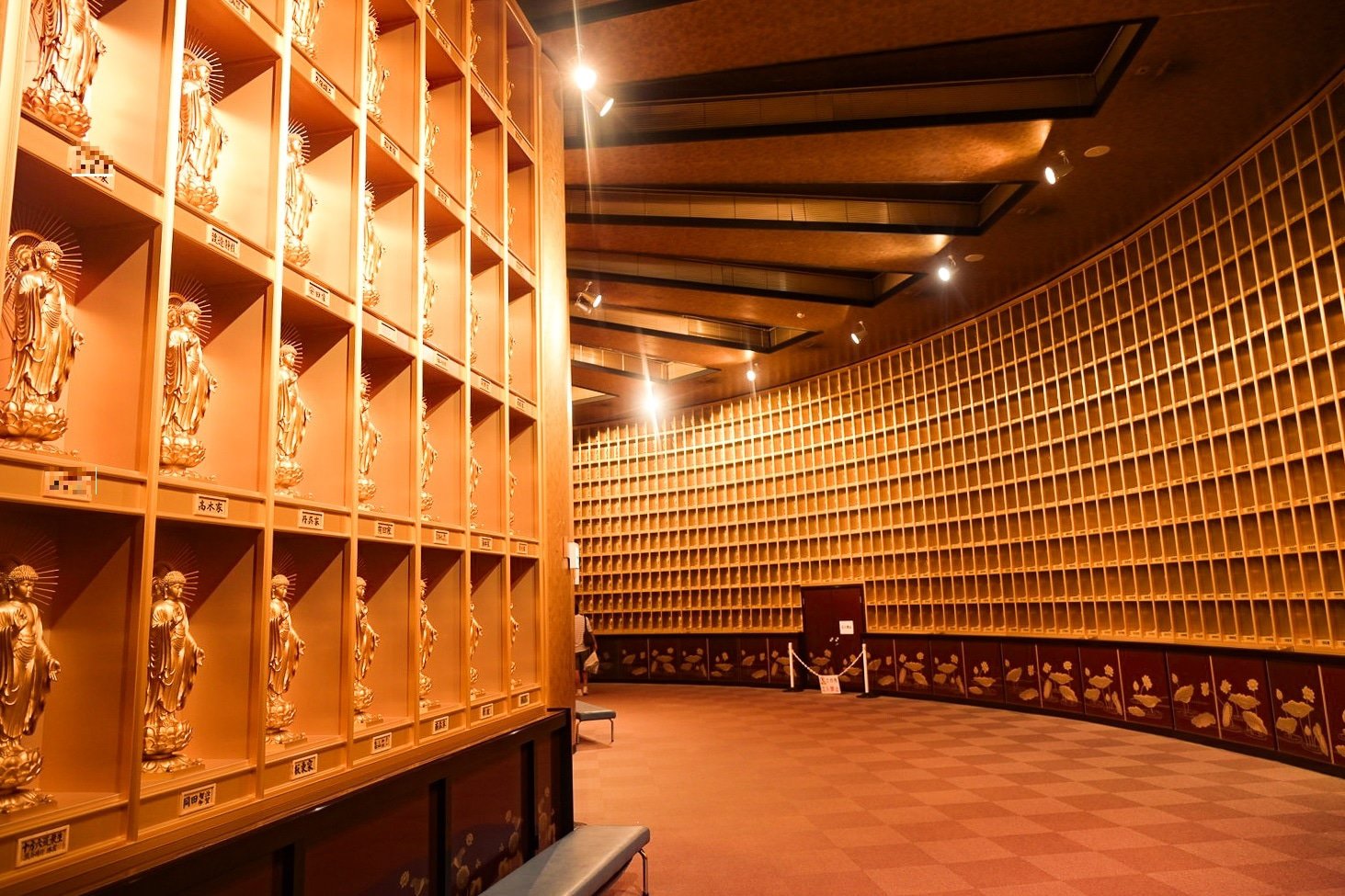
From the 4th floor, take the elevator down to the “Lotus World” on the 3rd floor. In Buddhism, the World of the Lotus Sanctuary is filled with happiness. The third floor is decorated in gold colors, with more than 3,400 “tainai butsu” (a small Buddha figure placed inside a larger one) lined up along the walls. Homyo (a posthumous Buddhist name) is placed inside each figure, and the sutra is recited for the souls of the departed for eternity. Every morning and evening, sutra chanting resonates through this solemn space.
Anyone who purchases a figure will be able to receive the service after their death, regardless of their nationality or religion. Many overseas visitors come to visit the temple.
World of Gratitude and Thankfulness (Second Floor)
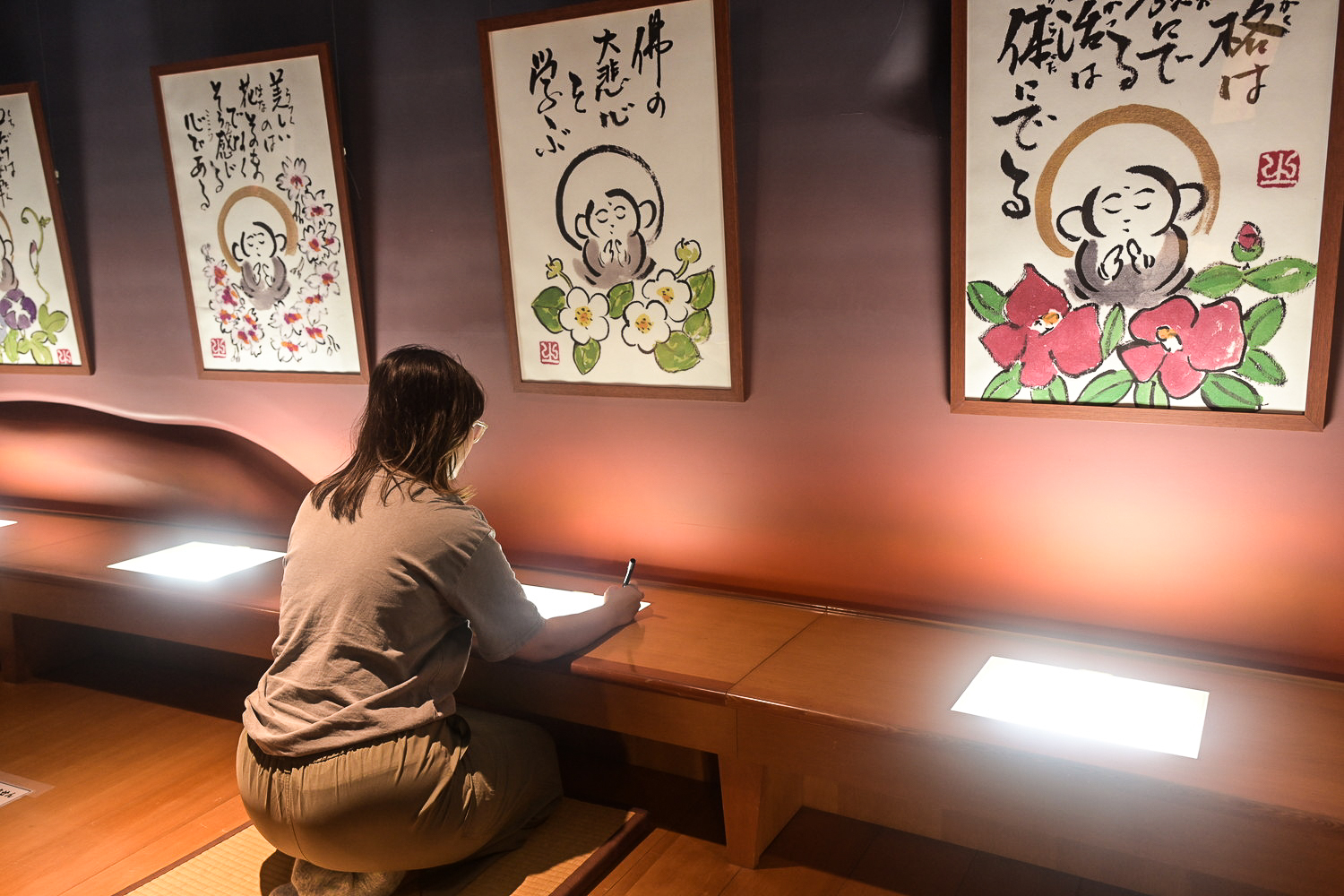
On the second floor, visitors can experience the World of Gratitude and Thankfulness (acknowledging Amitabha Tathagata’s benevolence and responding with gratitude) and shakyo (hand-copying sutras). The thin workshop paper is placed on sutra paper illuminated from below by a screen built into the table. That allows anyone, even those unfamiliar with Japanese, to easily trace sutra letters. The exercise will surely calm one’s mind.
There is also a souvenir shop. At the furthest corner of the floor, visitors can step outside the Ushiku Daibutsu and try applying gold leaf to the statue`s lotus stand.
Jodo Garden
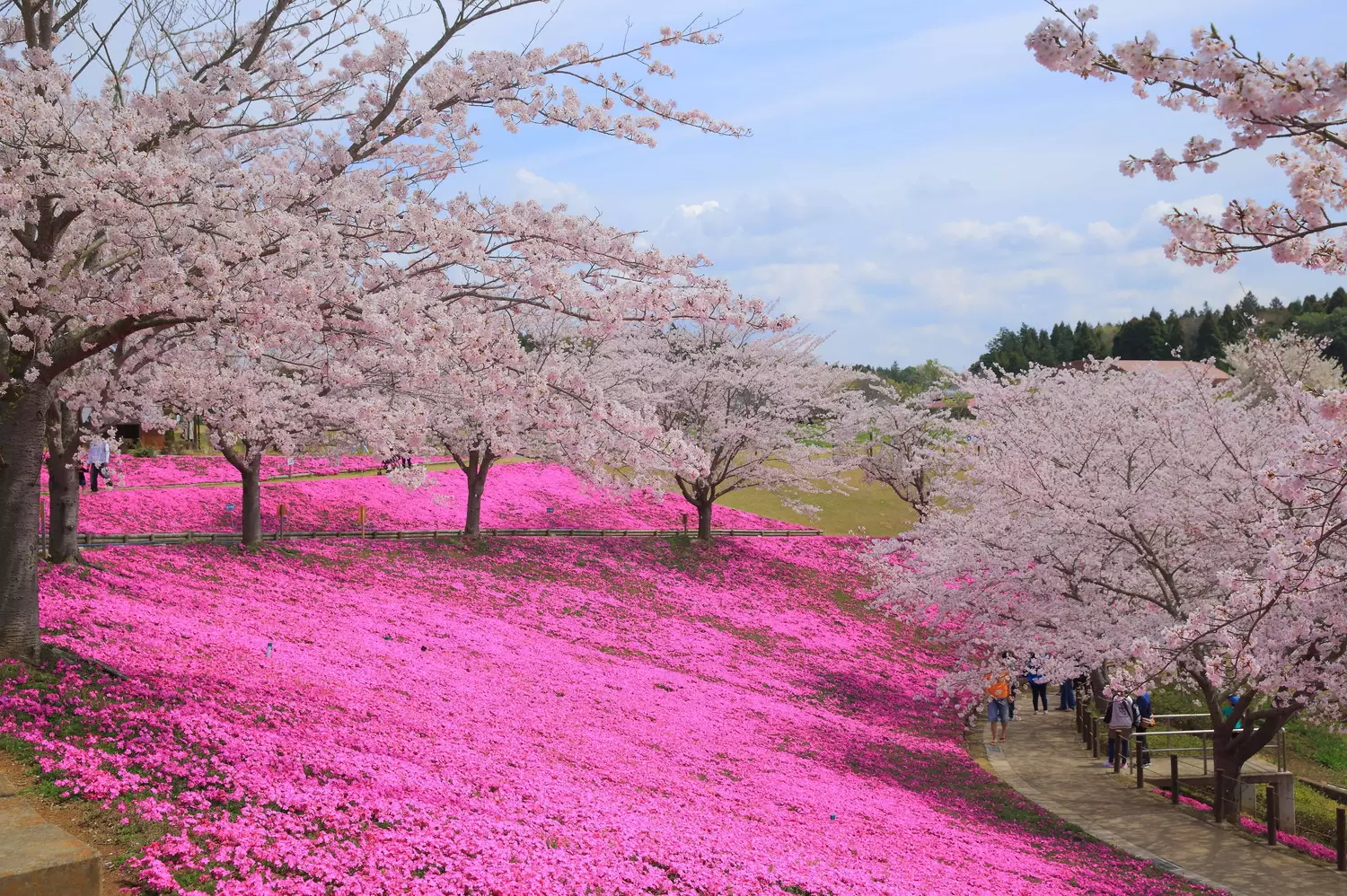
The Jodo (paradise) Garden, located at the feet of the statue, reflects the teachings of Jodo Shinshu. A pond and flower gardens are located in the garden, with cherry, moss phlox, hydrangea, and cosmos blooming from April to October.
There is also a “Fureai Garden Terrace” open on Sundays and holidays where visitors can feed ducks, rabbits, and other animals and enjoy cuddling them.
Various Events
In addition to the abovementioned attractions, various events are also held here. One of them, Manto-e, held on August 15, is especially impressive. A vast number of lanterns will encircle the statue, producing a breathtaking spectacle.
Shopping and Dining Spots Near the Ushiku Daibutsu
The following is a list of places to visit alongside the Ushiku Daibutsu Buddha Statue.
1. Ami Premium Outlets (5-minute drive from the Ushiku Daibutsu)
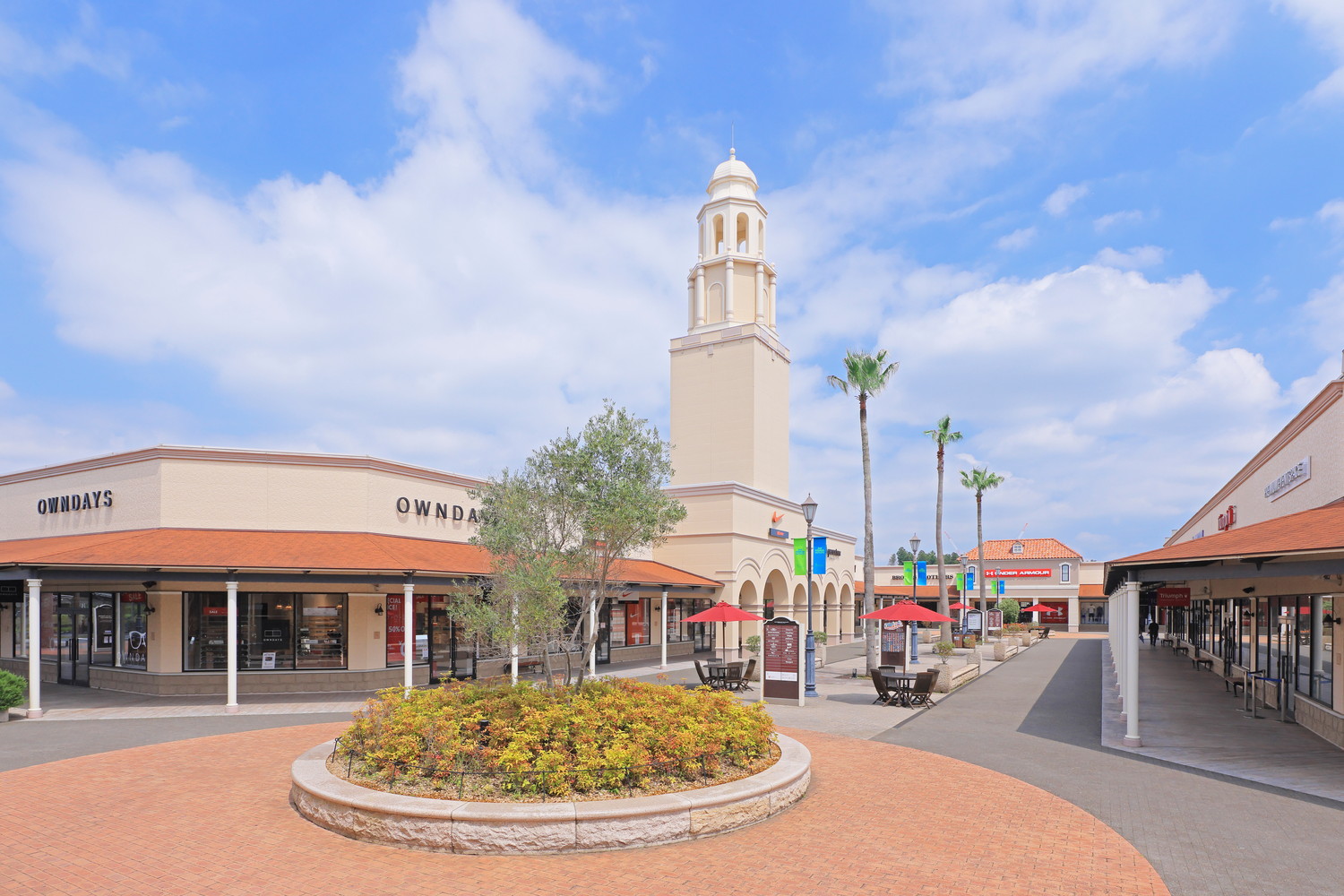
Picture courtesy of Mitsubishi Estate・Simon Co., Ltd.
This facility is located close to the Ushiku Daibutsu, making it an ideal destination for visitors who want to shop or dine.
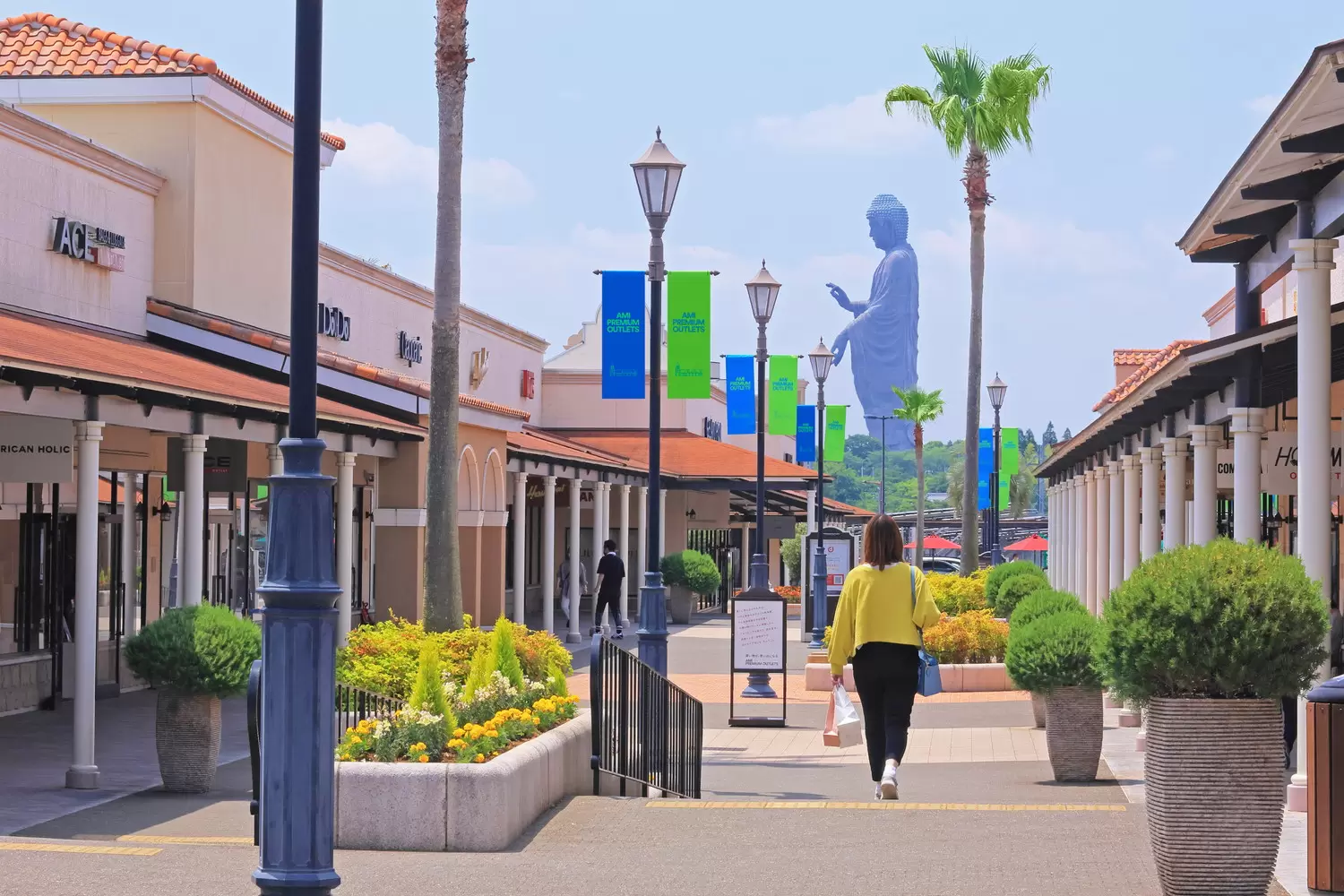
Picture courtesy of Mitsubishi Estate・Simon Co., Ltd.
Ami Premium Outlets has over 160 shops, including fashionable brands such as Adidas, New Balance, and Coach, gaining popularity alongside the outlets at Gotemba and Sano. Most shops offer duty-free shopping.
There are approximately 20 restaurants that serve a variety of cuisines including Chinese, Korean, Japanese, and Italian dishes. Eateries popular among overseas visitors, such as Tonkatsu (*1) Wako and Tsukiji Gindako, which serves takoyaki (*2), are also included.
*1: Thick, deep-fried pork cutlet breaded with flour and egg.
*2: Chopped octopus fried in a ball shape using a batter of flour and eggs.
Information
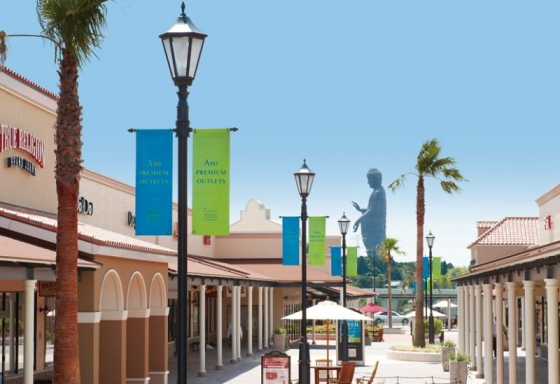
Ami Premium Outlets
This outlet mall opened in 2009 and houses exceptional brands from Japan and overseas. There are over 100 shops, so it's guaranteed you'll find something for everyone! There are also a variety of co…
See More2. Ushiku Chateau (20-minute drive from the Ushiku Daibutsu)
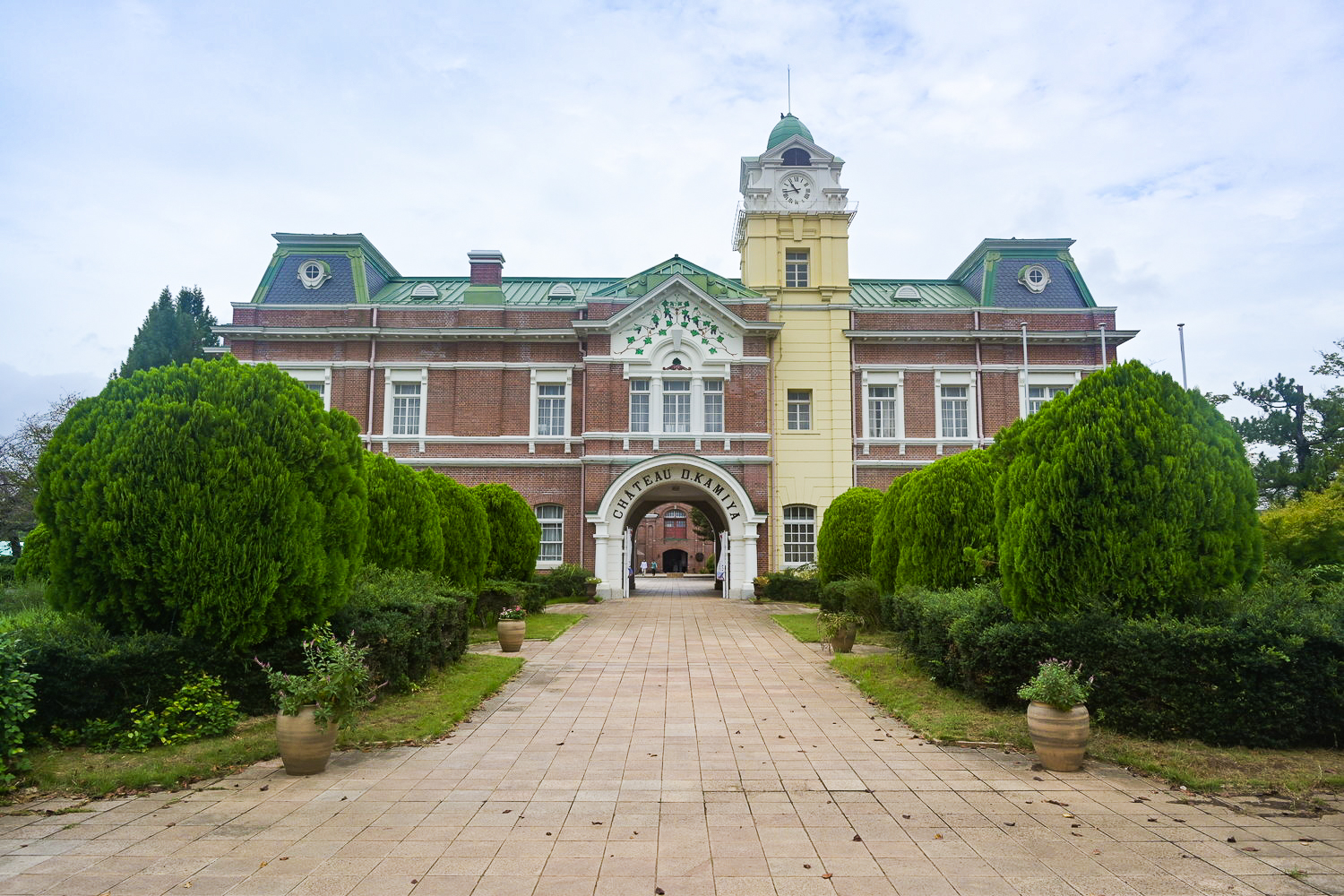
Ushiku Chateau is a pioneer in the Japanese winery industry. This facility is appealing both in terms of wine history and architecture, with historical buildings registered as Japan Heritage!
The company was established in 1903. The building’s architecture is a fusion of European and Japanese styles popular during the Meiji period (1868-1912).
The site spans 60,000 square meters and has an array of interesting places. One of them is the main building, clad in red brick, standing at the entrance to the site. With an elegant atmosphere, it has been used for filming TV dramas. While the building is not open to the public, the exterior is truly impressive.
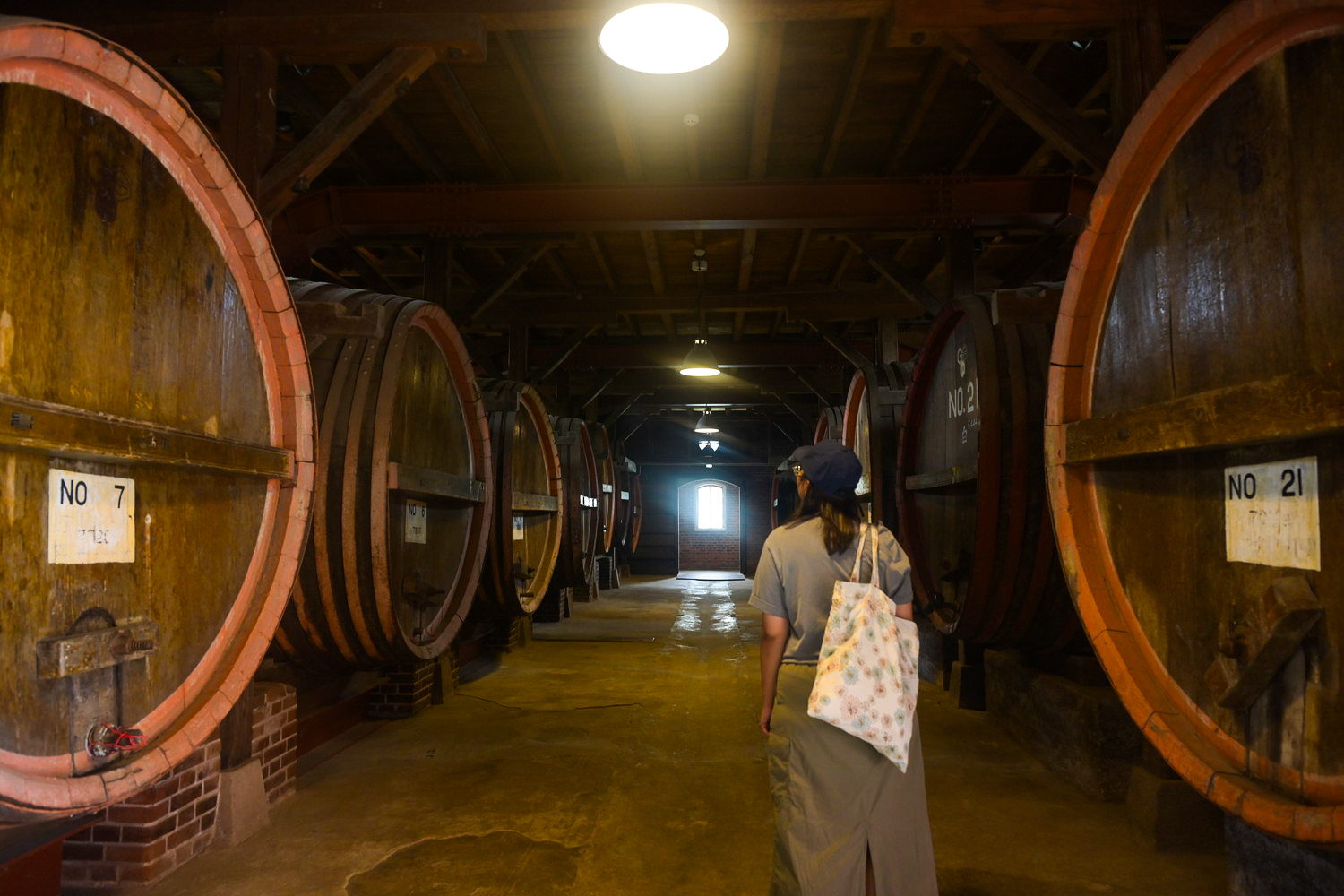
Located behind the main building, Kamiya Denbee Memorial Hall displays historical items related to the history of Japanese wine making and Ushiku Chateau, including wooden barrels and tools used for wine storage, bottles of wine popular among the people at that time, posters and photos of the brewery. Visitors can not only learn about the history here, but also take attractive pictures.
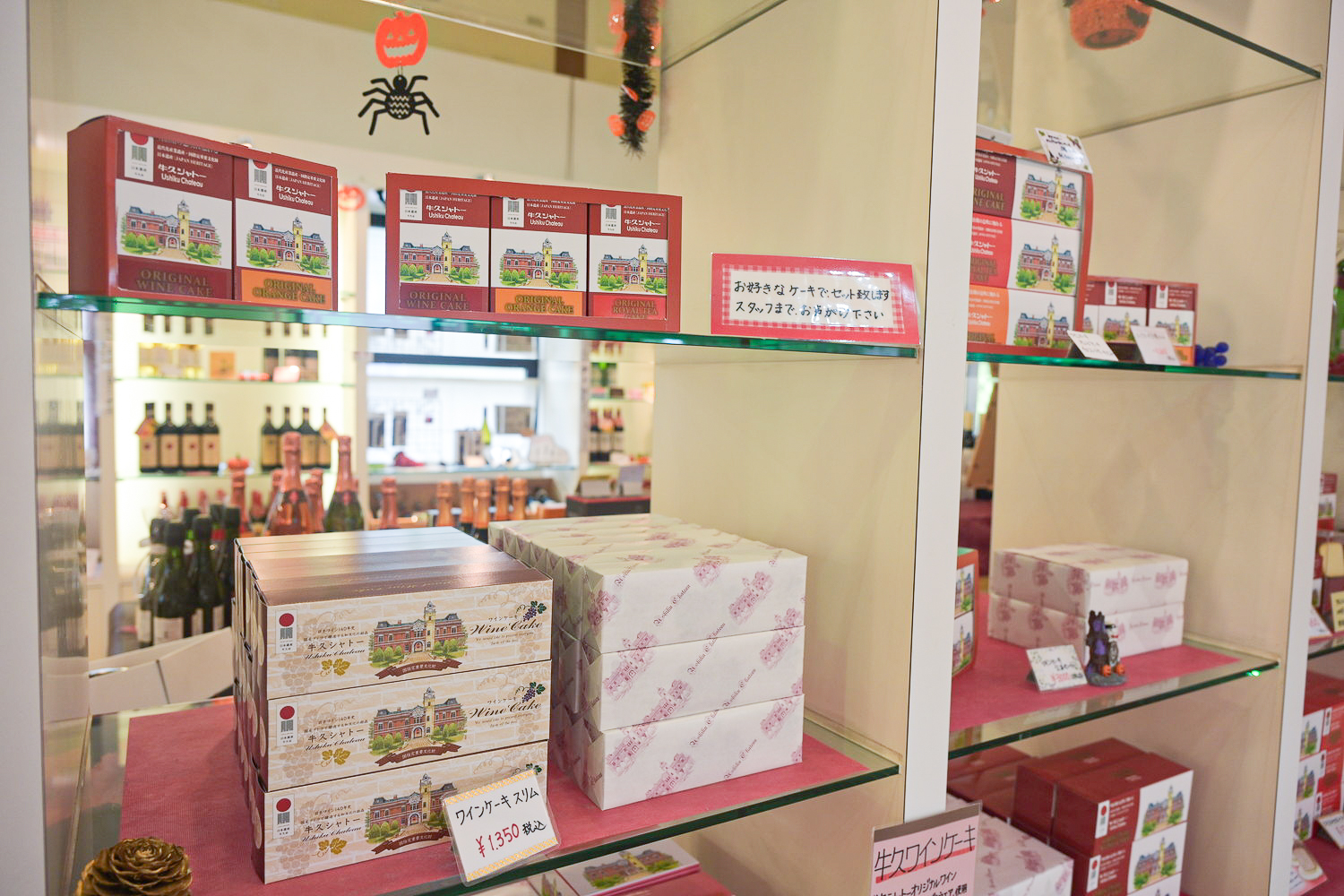
The souvenir shop, located next to the memorial hall, sells various types of wine and confectioneries, including those by the Ushiku Chateau brand. Visitors should not miss the wine cake, which is fragrant with a smooth texture. The alcohol content is only 1 to 2 percent, so it’s an ideal snack.
The shop also offers glass wines for sampling at an affordable price.
Visitors can also dine at the restaurant, renovated from a brick-clad wine cellar built over 100 years ago. Ushiku Chateau offers to enjoy nostalgic atmosphere, history, fine food, and shopping.
Information
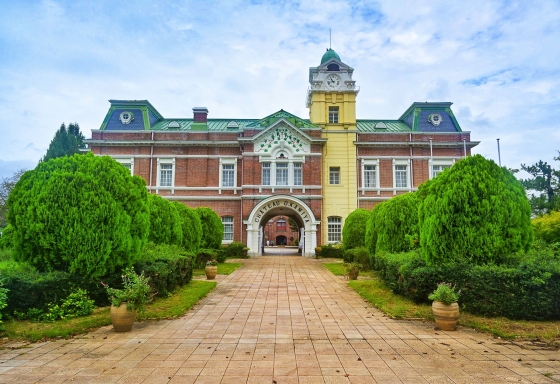
Ushiku Chateau
The winery was established in 1903, and the buildings were designed in a mixture of European and Japanese architectural styles. Ushiku Chateau is a pioneer of Japanese wineries. It is listed as a cul…
See More3. Unagi Yasukawa (20-minute drive from the Ushiku Daibutsu)
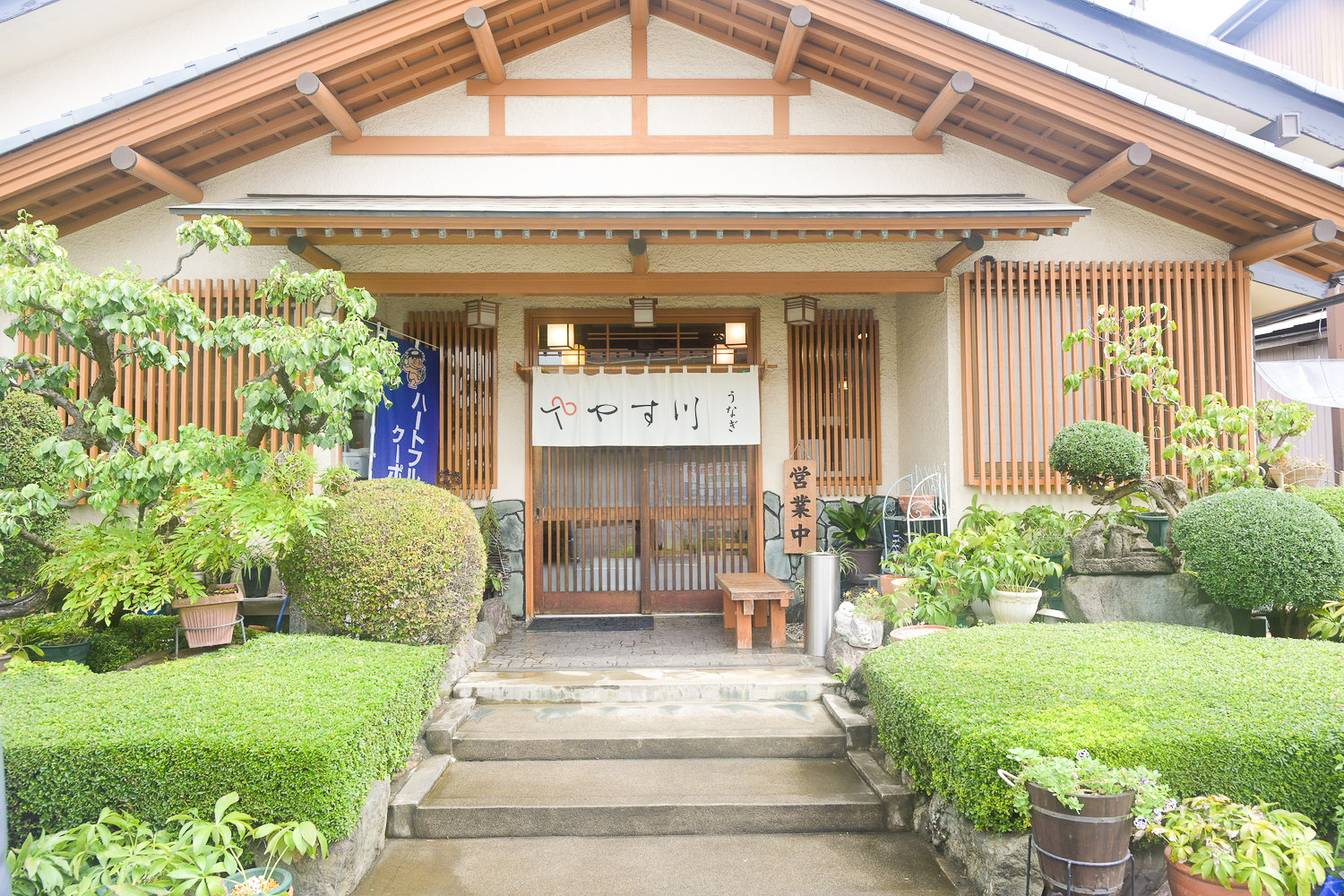
Those visiting the Ushiku Daibutsu should drop by Unagi Yasukawa for lunch.
The Ushiku area is said to be the birthplace of unadon (rice bowl topped with grilled eel and sauce). Unagi Yasukawa, a local restaurant, has a history spanning 40 years.
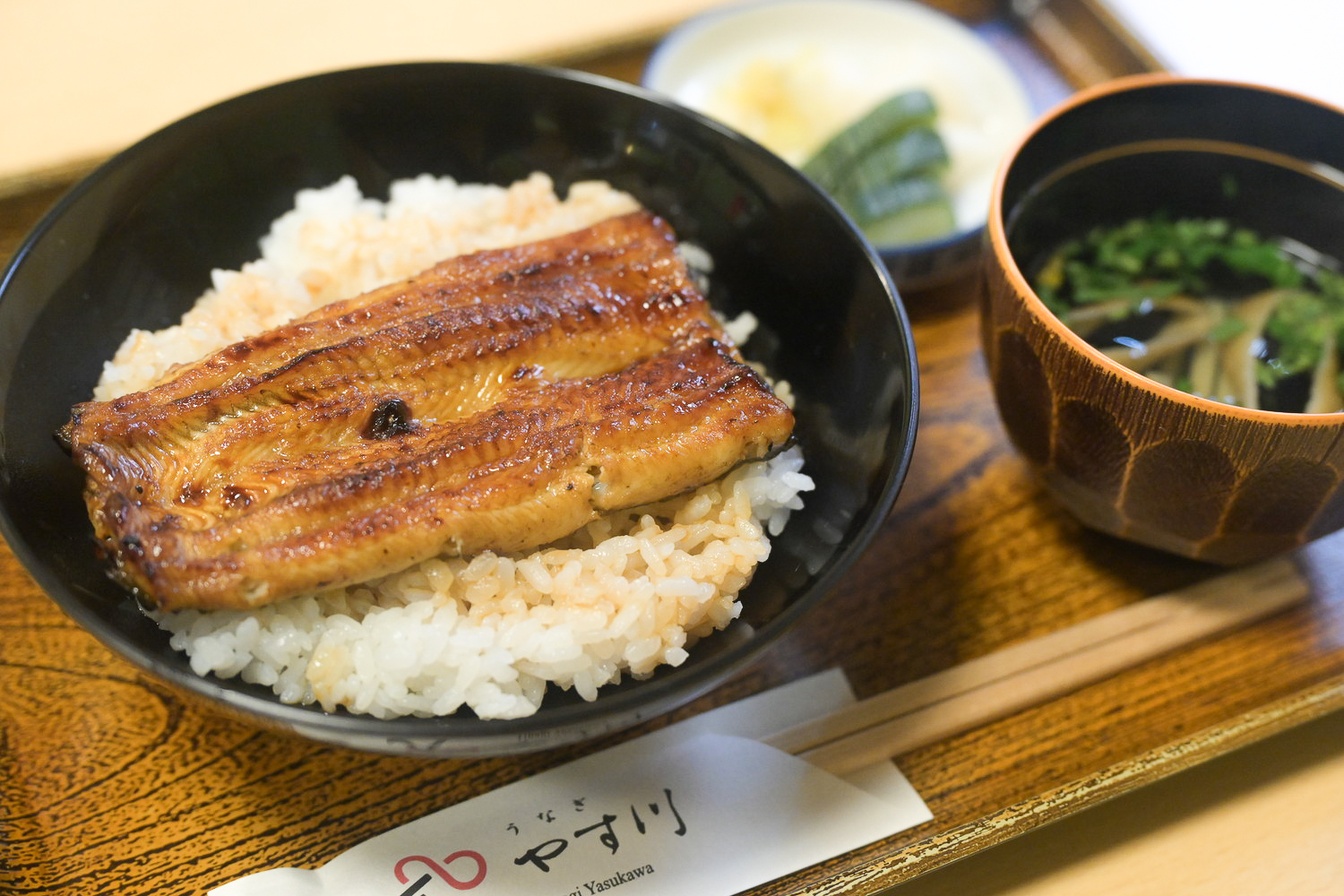
The restaurant buys carefully selected unagi from the Kyushu region and Aichi and Mie prefectures. The unagi is grilled precisely and served with a sauce based on a secret recipe.
The thick sauce is not too sweet, with a smooth taste that pairs well with the fragrant, crunchy skin. Those not fond of unagi can try other menu items, such as the oyakodon (chicken-and-egg bowl).
The restaurant has both table and tatami seats.
Information
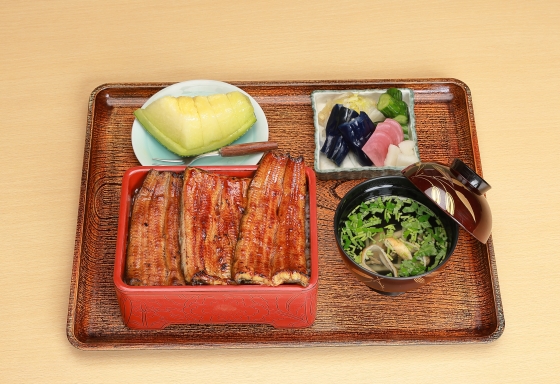
Unagi Yasukawa
Unagi Yasukawa is located in Ushiku City, which is considered the birthplace of unadon (eel rice bowl). This long-established eel specialty shop was founded in 1978 with a history exceeding some 45 …
See More4. Yamaichi Miso (8-minute drive from the Ushiku Daibutsu)
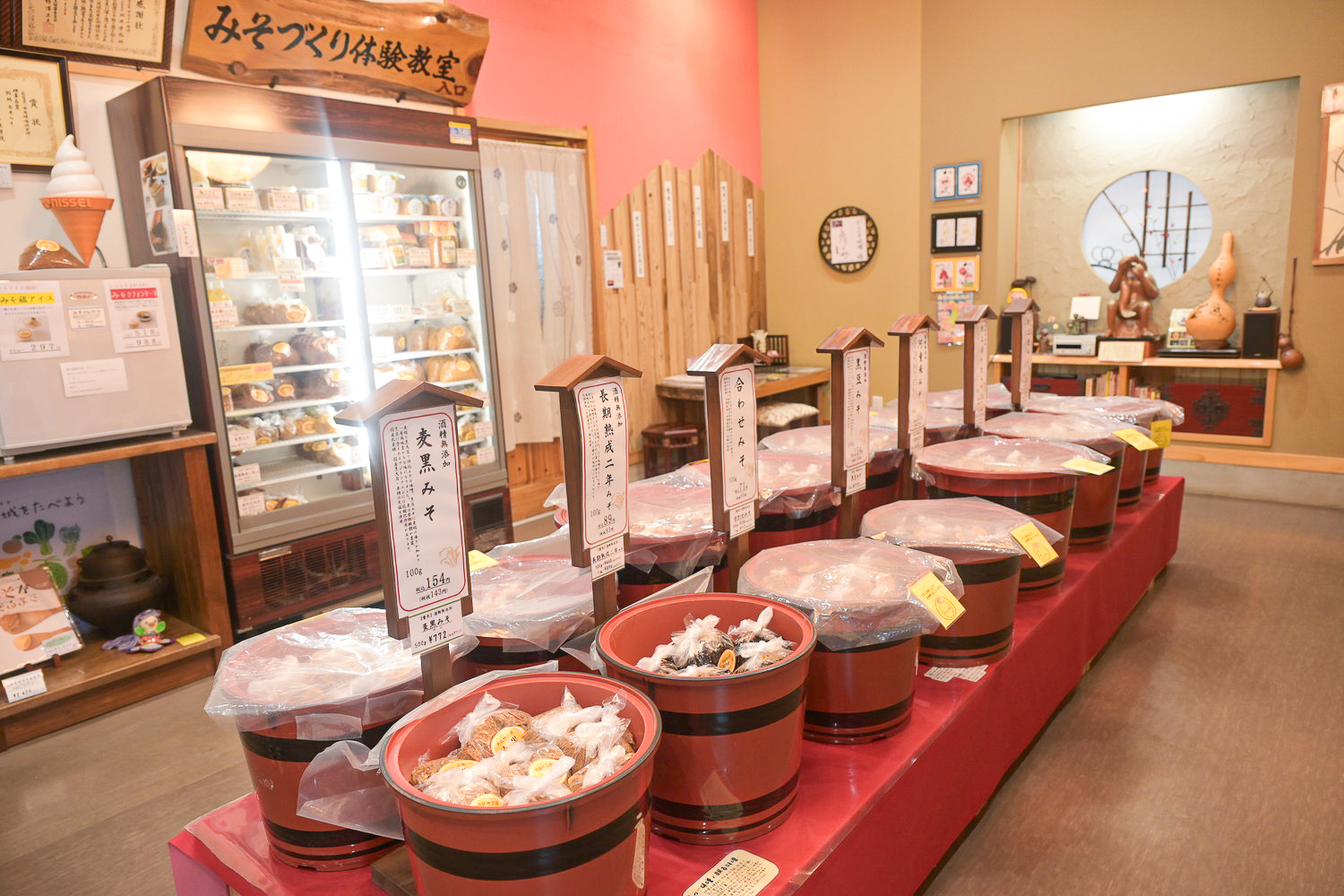
Miso, a fermented product, is one of the leading Japanese seasonings. Perhaps, many people overseas are familiar with ‘miso soup’ as a dish made with miso.
Established in 1962, Yamaichi Miso is a renowned, long-established manufacturer located near the Ushiku Daibutsu. The company sells over 15 types of miso at this facility.
The taste and color of miso change as it matures. Young miso is white and has a plain taste. The color will turn red as it matures, allowing the flavor to deepen. Aka (red) miso is a popular product with a strong taste, so those who prefer a rich flavor should give it a try.
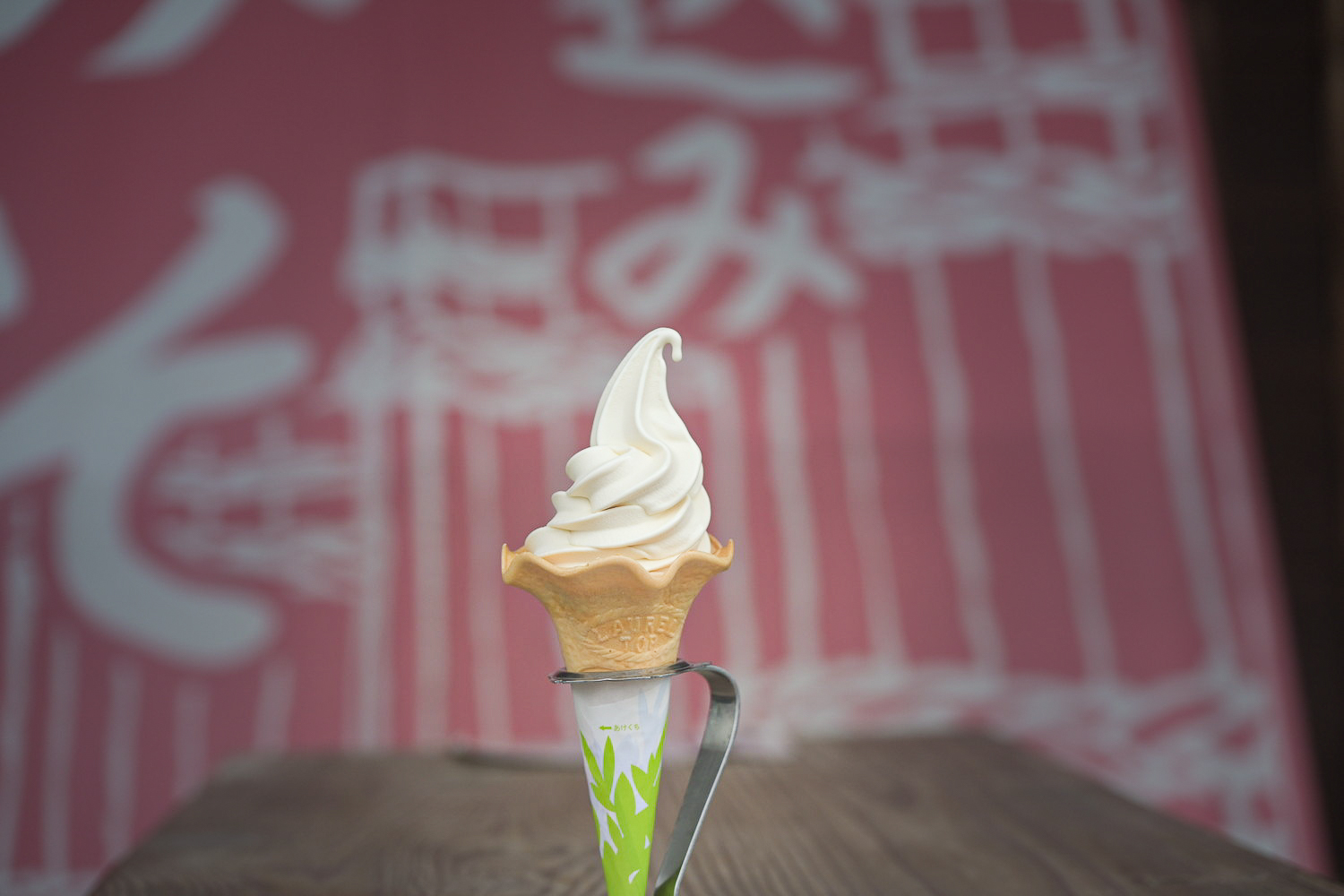
The most surprising product may be the soft-serve miso ice cream. The salty miso perfectly matches the sweet and silky ice cream.
The shop also offers products fit for souvenirs, such as miso peanuts, yuzu (a citrus fruit) miso and more.
Information
- Location
- Yamaichi Miso
- Address
- Ibaraki, Ushiku, Shimada-cho 2713
Google Map: https://maps.app.goo.gl/MYHt1SercQCoFpY7A - Access
- Public Transport: Take the bus bound for Ushiku Daibutsu from Ushiku Station's east gate for 20 minutes, get off at Okuno Chuo bus stop and walk for 1 minute
Car: 10 minutes from Ushiku-Ami IC on the Joban Expressway - Business Hours
- Weekdays 9:00 - 17:00
Saturdays, Sundays, and Holidays 10:00 - 17:00 - Contact
- 029-875-0002
- Website
- https://www.yamaichimiso.co.jp/
5. Ramen Shop Ushiku Kessoku (15-minute drive from the Ushiku Daibutsu)
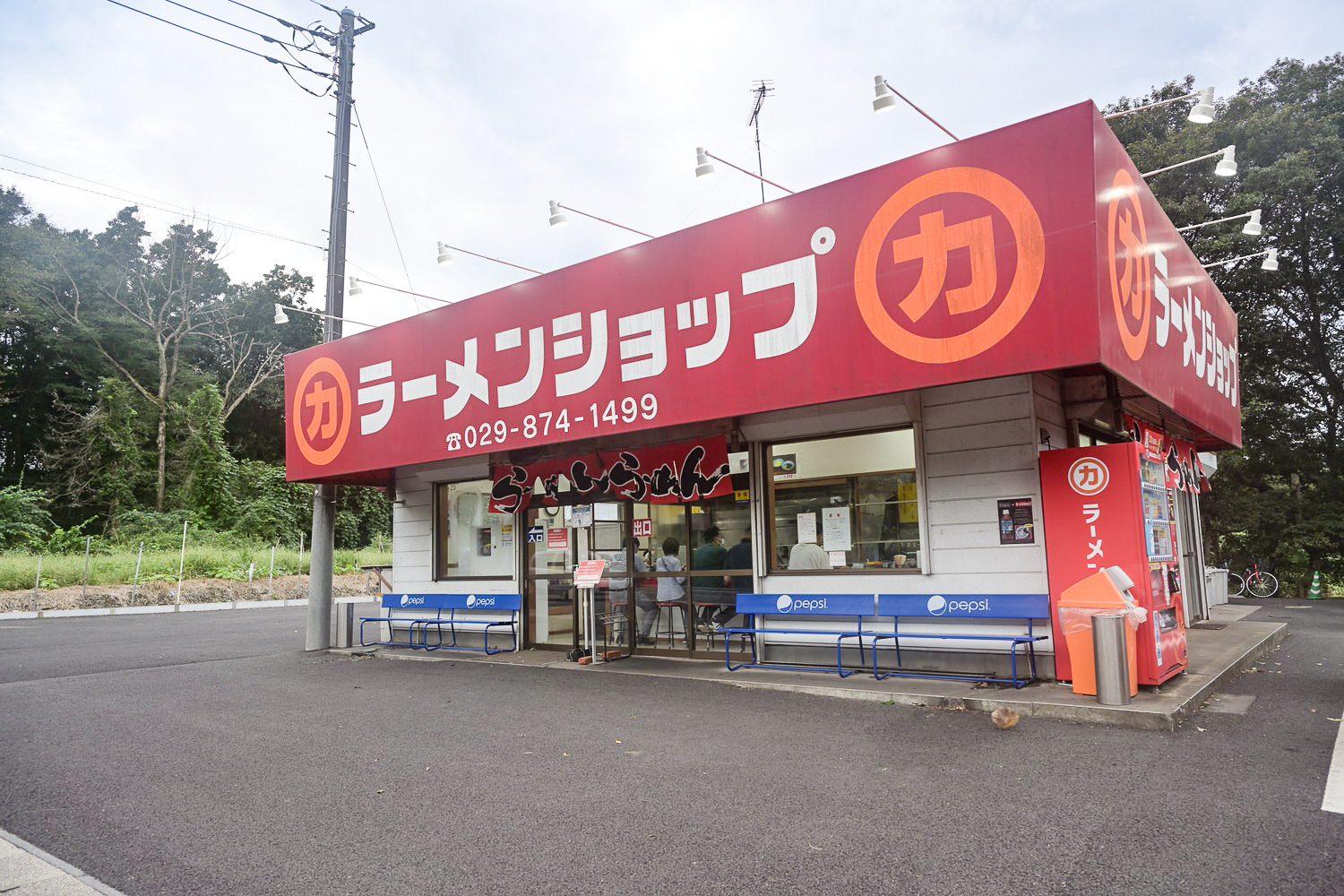
This is a restaurant that ramen enthusiasts should not miss. Despite it is a very simple building standing by the roadside, customers line up daily to buy tickets at the vending machine inside.
The restaurant carefully selects ingredients, using homemade noodles and scallions from Ibaraki Prefecture. The soup is simmered for over ten hours, while the chashu pork is so soft that the staff has difficulty slicing it.
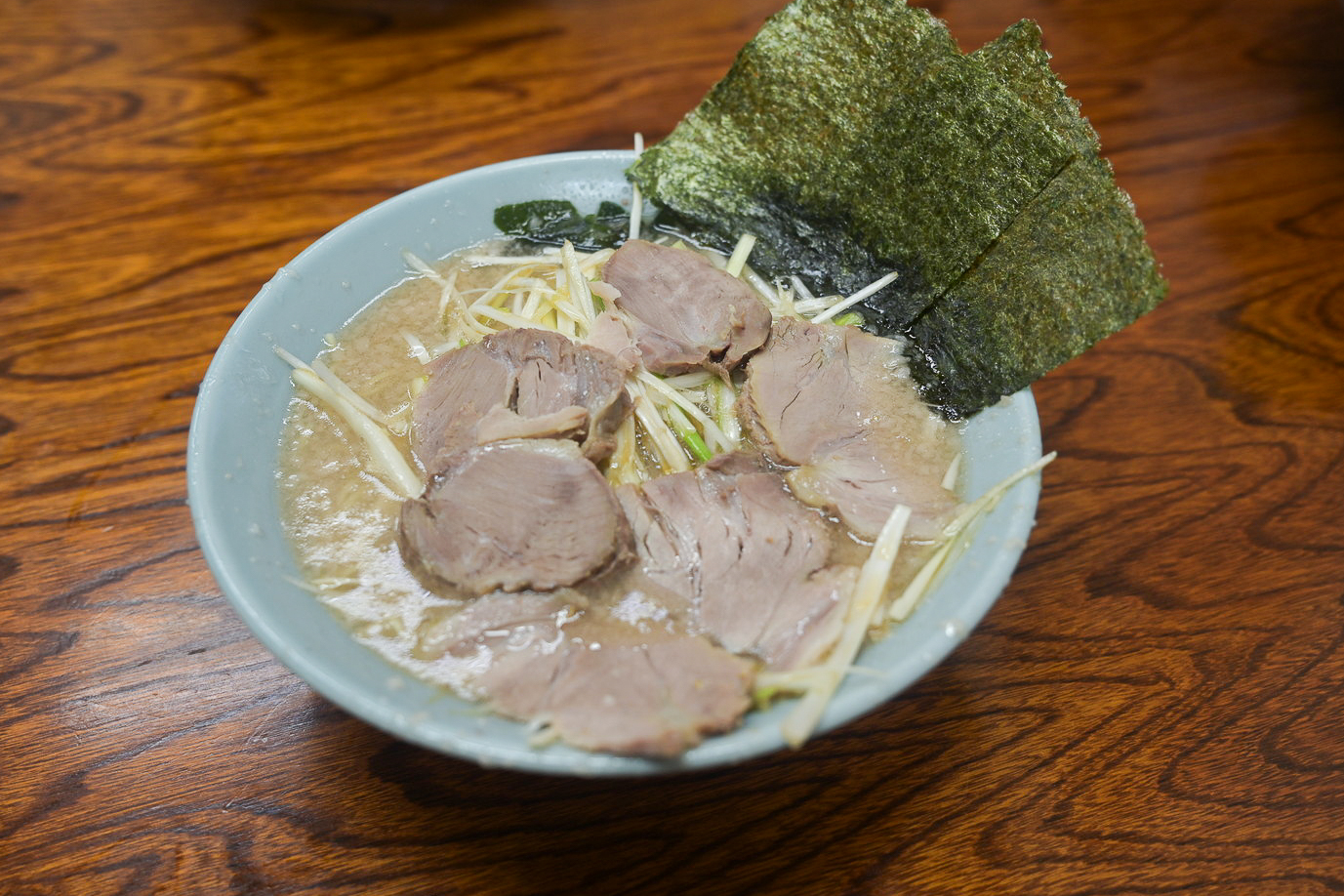
The Negi Chashu-men is a popular menu item, topped with a generous portion of Ibaraki green onions (negi). The soup is laced with lard, giving this ramen a heavy flavor. However, the green onions help create a nice balance.
Another popular dish is the Tsuke (dipping noodles) Chashu-men, where the noodles and soup are served separately. Customers can adjust the amount of the soup they dip the noodles into. The soup served at this ramen shop has a deep, tangy taste, which goes well with the thin, al dente noodles.
The restaurant is especially crowded at lunch and in the evening. Therefore, we recommend visiting between 15:00 and 17:00.
Information
- Location
- Ramen Shop Ushiku Kessoku
- Address
- Ibaraki, Ushiku, Kessoku-cho 504−1
Google Map: https://maps.app.goo.gl/XeiJi3M2zM6NqhhX8 - Access
- Public Transport: Take the bus bound for the Ushiku Daibutsu from Ushiku Station's east gate for 10 minutes, get off at Okami Kaikan Iriguchi bus stop and walk for 18 minutes
Car: 5 minutes from Ushiku-Ami IC on the Joban Expressway - Business Hours
- 10:45 - 23:30
- Contact
- 029-874-1499
Cycling Around the Ushiku Area
Those interested in exploring more of Ibaraki Prefecture, including the Ushiku area, should try cycling at Tsukuba-Kasumigaura Ring-Ring Road.
This 180-kilometer-long national cycle route encircles Lake Kasumigaura, offering visitors the opportunity to rent bicycles in Tsuchiura, a city near Ushiku. Cyclists can enjoy the scenic rural landscapes of Ibaraki along the route.
Check out the links below if you’re interested in topics related to this article.
Great Access From Tokyo! 7 Amazing Shrines and Temples in Ibaraki
Tsukuba-Kasumigaura Ring Ring Road: Scenic Views and Historical Sites
